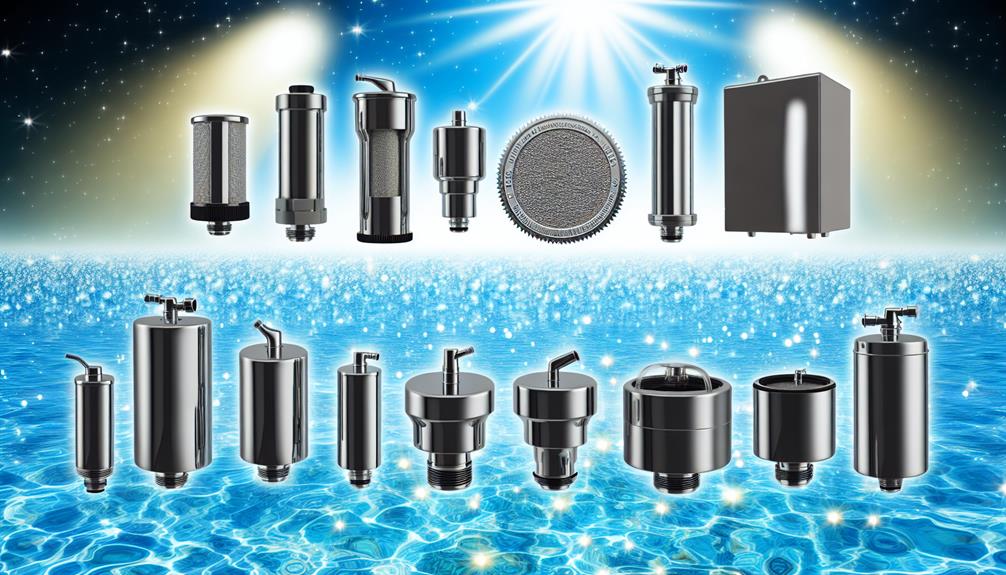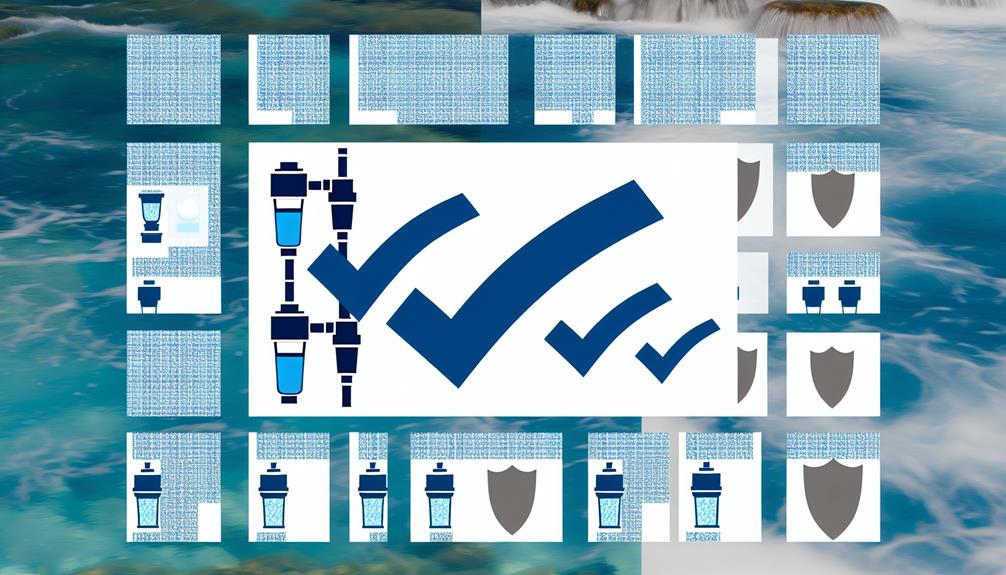Water is life's most essential resource, yet not all filtration systems safeguard its purity; a health-compliant water filtration system, on the other hand, ensures that the water you drink meets rigorous health and safety standards.
You're probably using water filters in your home, but have you ever paused to wonder what makes them compliant with health regulations? These systems are more than just physical barriers—they're a complex interplay of technology and regulation, designed to meet or exceed standards that protect you from contaminants.
As you consider the safety of your drinking water, it's crucial to understand the certifications that set apart truly health-compliant systems. The intricacies of these standards and the technologies that comply with them might seem daunting, but you'll find that a deeper grasp of what lies behind that spigot can impact your well-being significantly.
Understanding NSF/ANSI Standards
To ensure the safety and effectiveness of water filtration systems, it's crucial to comprehend the NSF/ANSI standards that certify the reduction of various contaminants. When you're evaluating drinking water filtration options, NSF/ANSI 42 and 53 are pivotal benchmarks. Systems certified under these standards are proven to mitigate aesthetic impurities and health-related contaminants, including chlorine, taste, odor, lead, and volatile organic compounds (VOCs).
NSF/ANSI 44 certified water softeners employ cation exchange resin, pivotal in treating hardness due to calcium and magnesium ions by substituting them with sodium or potassium ions. In the realm of microbiological safety, NSF/ANSI 55 ultraviolet treatment systems use UV light to either inactivate or destroy harmful microorganisms, with Class A systems designed for tackling contaminated water and Class B for enhancing already disinfected drinking water.
Moreover, NSF/ANSI 58 reverse osmosis systems utilize a semi-permeable membrane with a specific pore size, working under reverse pressure to reduce contaminants that are regulated by both Health Canada and the EPA. These systems use additional filters to ensure comprehensive treatment, adhering to stringent public health standards.
Recognizing these national standards is vital as they guarantee the systems you use are certified to reduce harmful contaminants, supporting the integrity of water treatment processes and public health.
Identifying Certified Filters
You'll often find that filters bearing the NSF/ANSI certification mark meet rigorous health and safety standards, ensuring they effectively reduce specific contaminants in your water. When you're selecting a household water treatment system, it's critical to choose one that ensures safe drinking water by adhering to established Drinking Water Treatment Technologies standards.
- NSF/ANSI 42 & 53: For aesthetic concerns like chlorine and odor.
- NSF/ANSI 44: Targets water hardness due to minerals.
- NSF/ANSI 55: Employs UV light to tackle microbes.
- NSF/ANSI 58: Uses reverse osmosis for broader contaminant reduction.
Each of these certifications is designed to guarantee that Water Filters and Microbiological Water Purifiers reduce contaminants as claimed. For instance, NSF/ANSI 58 certified filtration systems are recognized for their ability to diminish substances that are regulated by Health Canada and the Environmental Protection Agency (EPA).
It's essential to refer to your local Consumer Confidence Reports (CCRs) to understand the quality of your tap water. These reports can guide you in deciding if additional Treatment Technologies for Household use are necessary.
Ultimately, a certified filter is a cornerstone in ensuring that your water filtration system provides you with the level of safety and purity you expect.
Certification Process Explained
Understanding the significance of NSF/ANSI certifications in water filters leads us to examine the rigorous process these systems undergo to earn such endorsements. The certification process explained here is pivotal, as it assures you that your filtration system adheres to specific standards for the reduction of contaminants. An independent organization that develops these standards, NSF International, works alongside local health departments' environmental health groups to establish criteria that ensure public safety.
Your filtration system, whether it uses a semi-permeable membrane like in NSF/ANSI 58 certified reverse osmosis systems or UV light in NSF/ANSI 55 certified treatment systems, must maintain structural integrity and perform as advertised. The certification process involves extensive product testing and material analyses to verify that systems effectively reduce health-related contaminants as well as aesthetic impurities, as outlined by NSF/ANSI 42 and 53 standards.
Moreover, health departments' environmental health divisions often reference these certifications when advising on water treatment solutions. NSF/ANSI 44 certification for water softeners, for instance, confirms the system's ability to mitigate hardness due to calcium and magnesium ions. Through rigorous evaluation, these endorsements help you navigate toward safer, health-compliant water treatment systems.
Importance of WQA Endorsement
When a water filtration system boasts a WQA endorsement, it signifies compliance with stringent industry standards and regulatory expectations for performance and contaminant removal. This endorsement is a crucial guide for household water quality and a testament to the system's ability to purify your drinking water effectively.
Here's why WQA endorsement matters:
- Ensures efficiency in reducing the amount of emerging contaminants.
- Validates the use of advanced technologies for household use, such as reverse osmosis systems.
- Affirms the effectiveness of supplementary purification methods like the use of ultraviolet light.
- Provides a benchmark for evaluating the health impact of home water systems.
The WQA sets the bar for evaluating water filtration technologies, ensuring they meet or exceed established parameters for safety and functionality. As you consider the myriad of options for your home water systems, remember that a WQA endorsement isn't just a label—it's your assurance that the water you're drinking meets rigorous health and safety criteria.
IAPMO's Role in Compliance
IAPMO's certification of water filtration systems ensures they meet rigorous industry standards for removing contaminants, providing a reliable indicator of performance and safety for consumers. When you're considering installing a household water system, it's essential to look for IAPMO's mark of compliance. Their certification signifies that a system, whether it employs osmosis, ultraviolet light, or other technologies, has been thoroughly tested to inactivate or kill bacteria and reduce volatile organic chemicals effectively.
Water systems certified by IAPMO are designed as a guide to help you navigate the complex choices of water purification. For instance, softeners use ion exchange to remove minerals, but they may not address other contaminants. An IAPMO-certified reverse osmosis system, however, can remove a broad range of impurities, including those minerals. Additionally, systems using UV light are certified to ensure they provide sufficient radiation to inactivate bacteria and viruses without compromising the water quality.
Choosing an IAPMO-certified system provides evidence-based assurance that the technology will perform as expected. If you have specific health concerns or questions about local water quality, it's prudent to contact your local health department for guidance in conjunction with selecting an IAPMO-certified filtration system.

